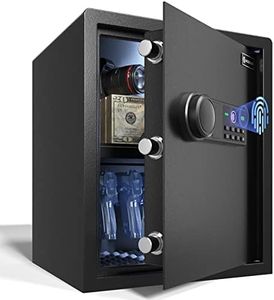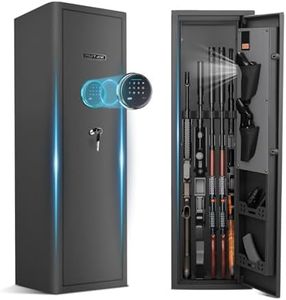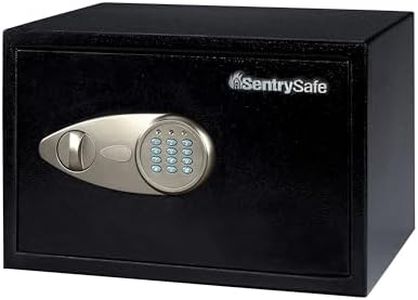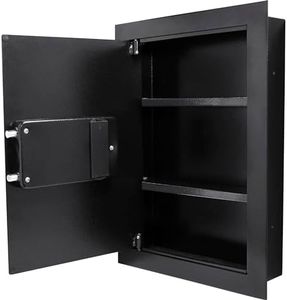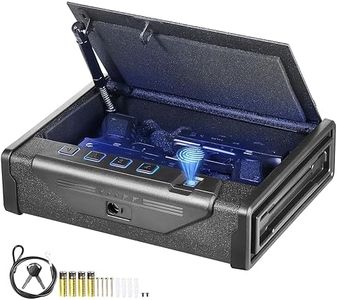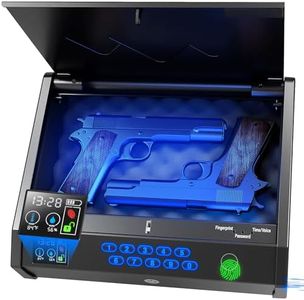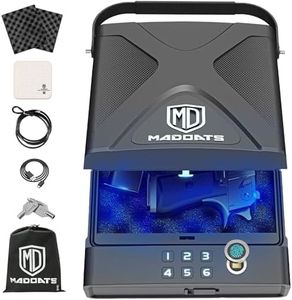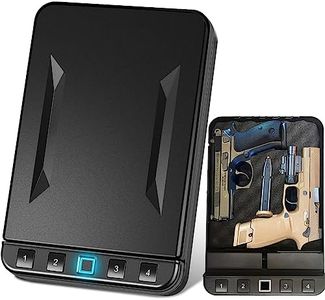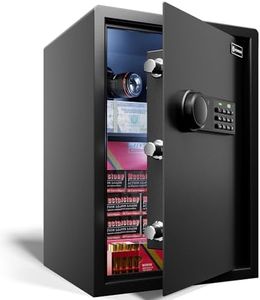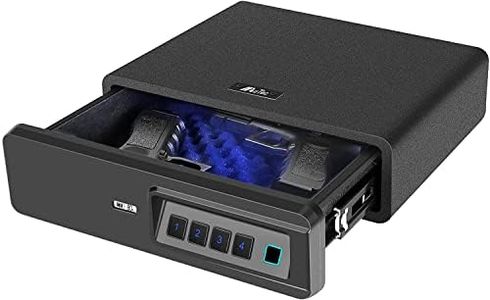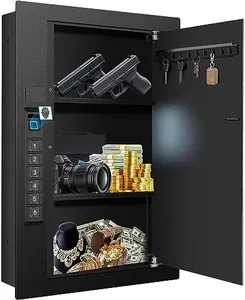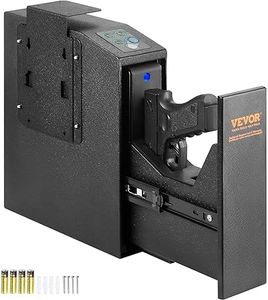We Use CookiesWe use cookies to enhance the security, performance,
functionality and for analytical and promotional activities. By continuing to browse this site you
are agreeing to our privacy policy
10 Best Gun Safes
From leading brands and best sellers available on the web.Buying Guide for the Best Gun Safes
Choosing the right gun safe is important for both security and peace of mind. A good gun safe protects firearms from unauthorized access, theft, and damage, while also keeping them organized and ready when needed. To find the best fit for your needs, consider how many and what type of firearms you own, where you want to keep the safe, and how quickly you might need to access your weapons. Understanding the key features will help you pick a safe that matches your priorities.Size and CapacitySize and capacity refer to how many guns and other valuables a safe can hold. A small safe might fit only one or two handguns, while large safes can store dozens of long guns plus accessories. Your choice here depends on the number and types of firearms you own and if you want to store other items like ammunition or documents. If you have or plan to collect more firearms, it's often wise to pick a slightly larger size than you currently need, so you won’t outgrow it quickly.
Locking MechanismThe locking mechanism is what keeps the safe shut and secure. Common types include key locks, mechanical dial locks, electronic keypads, and biometric (fingerprint) locks. Mechanical dials are reliable but slower to open, while electronic and biometric options offer faster access and greater convenience. Think about how urgently you may need access to your gun—quick entry is crucial for home defense, while slower options might be fine if you prioritize maximum security or storage.
Steel ThicknessSteel thickness, measured in gauge or millimeters, determines how hard it is to break into the safe. Thicker steel (lower gauge numbers, like 10-gauge, or higher millimeters) means stronger protection. Thin steel safes are lighter and less expensive but may be easier to pry or cut open. If defense against theft is a top concern, focus on heavier, thicker steel. For basic childproofing or if weight is a concern, lighter models might be sufficient.
Fire ProtectionFire protection measures how long and how well the safe can keep its contents safe during a fire, usually rated in minutes and maximum temperature. Not all safes offer fire resistance. If you’re concerned about fire, look for safes with an established fire rating, which often come with thicker walls and special insulation. Pick a rating that matches your risk level, such as 30, 60, or 90 minutes, depending on how quickly firefighters could reach your home.
Weight and Mounting OptionsThe weight of a safe and its mounting options affect its security. Heavier safes are harder to steal, but may be difficult to move or install. Many smaller safes feature bolt-down options to secure them to a wall or floor, which adds protection even if the safe itself isn’t very heavy. Consider whether you need to move the safe in the future and the structural strength of where you want to install it; bolt-down options are good for lighter safes.
Interior FeaturesInterior features include shelving, racks, and padding that help organize and protect your guns and other valuables. Adjustable shelves and racks provide flexibility if your collection changes in size or type. Soft lining and compartments protect against scratches and impact. If you plan to store a variety of items, look for a customizable interior.
Quick Access FeaturesQuick access features allow you to get to your firearm in an emergency. Features might include spring-loaded doors, auto-open drawers, or touchpad entry. These are especially important for defensive firearms kept in your bedroom or living area. If fast access is a priority, look for safes that specialize in quick entry mechanisms.
